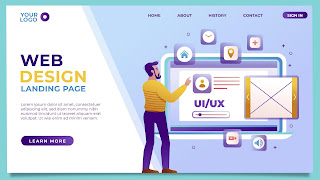Creative Logo
Logo design is the process of creating a visual representation or symbol that represents a brand or business. A logo should be simple, memorable, and easily recognizable. It is an important part of a company's branding strategy and can have a big impact on how the company is perceived.
A logo can be created using a variety of design techniques and tools, including illustration, typography, and graphic elements such as shapes, colors, and patterns. The design process usually starts with researching the company and its target audience, then brainstorming ideas and creating rough sketches. The next step is to refine the sketches and choose the best one to develop further, often with the help of digital design tools such as Adobe Illustrator.
A good logo should be:
• Simple and easily recognizable
• Memorable and timeless
• Versatile, and able to be used in a variety of contexts
• Appropriate for the company's target audience and industry
• Unique, to help the company stand out from its competitors
Overall, a successful logo design requires a combination of creativity, technical skill, and an understanding of the company and its brand values.
logo importance in branding
Logos play a crucial role in branding because they serve as the visual representation of a company's identity. A logo is often the first thing a customer sees when encountering a brand, so it's important that it makes a strong and positive impression. Here are some reasons why logos are important in branding:
1. Recognition: A well-designed logo can help customers quickly and easily identify a brand and differentiate it from its competitors.
2. Memory retention: A memorable logo can help customers remember a brand, which can lead to repeat business.
3. Trust: A professional-looking logo can create a sense of trust and credibility for a brand, particularly for businesses that are new or unknown.
4. Versatility: A logo should be versatile and work well in a variety of contexts, such as print materials, websites, and advertising.
5. Consistency: Consistent use of a logo across all touchpoints helps to reinforce a brand's image and messaging.
6. Emotional connection: A logo can evoke emotions and create an emotional connection between a brand and its customers.
In conclusion, a logo is an essential element of a brand's identity and plays a vital role in helping customers remember and recognize a brand. Investing in a professional logo design can pay off in the long run by creating a strong, memorable, and positive image for a brand.
Logo types
There are several types of logos, each with its own unique characteristics and uses. Here are some of the most common types:
1. Symbol or Iconic Logo: This type of logo consists of a symbol or icon that represents the brand. Examples include the apple logo for Apple Inc. and the golden arches for McDonald's.
2. Wordmark or Typographical Logo: This type of logo consists solely of the brand's name, usually in a specific typeface or font. Examples include Google and Coca-Cola.
3. Combination Mark: This type of logo combines a symbol or icon with the brand's name, often incorporating the name into the design of the symbol. Examples include Nike and FedEx.
4. Abstract Logo: This type of logo consists of an abstract shape or symbol that represents the brand. Abstract logos can be more difficult to recognize and remember, but they can also be more unique and memorable.
5. Emblem Logo: This type of logo consists of a symbol or icon surrounded by text, usually in the form of a badge or seal. Emblems are often used by schools, sports teams, and government organizations.
6. Character Logo: This type of logo features a mascot or character that represents the brand. Character logos are often used by companies targeting children or young adults.
The type of logo that's best for a particular brand will depend on factors such as the brand's target audience, industry, and values. It's important to choose a logo type that accurately represents the brand and appeals to its target audience.





No comments:
Post a Comment